
Eagle Feathers #179 – King of the Hills
By Bob (Monty) Doherty
Somerville is said to be the City of Seven Hills, and Seven Hills Park in Davis Square highlights them. In reality, the city has fourteen hills known by twenty-eight different names. For over three centuries, Winter Hill has been the most notable.
Apparently, no one knows for sure where her name originated or how it remained. Some say she received her name from Governor Winthrop when he first wintered here on his arrival from England. Others speculate that it began in the early revolutionary era when the hill was covered with hundreds of white sailcloth tents pitched by American soldiers during their siege of Boston.
§
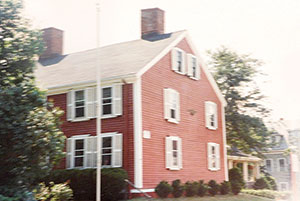
§
Through the years, the hill’s crown has witnessed a kaleidoscope of historic occurrences.
-
- In 2020, Plymouth, Massachusetts will be four hundred years old. In 1621, Captain Miles Standish, military protector of the Plymouth Pilgrims, was the first European to explore this Somerville hill. For over 120 years, part of his Coat of Arms embellished our Massachusetts State Flag.
§
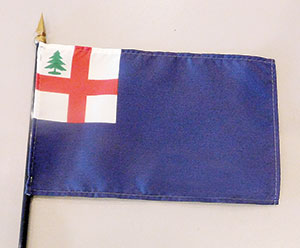
- In 2020, Plymouth, Massachusetts will be four hundred years old. In 1621, Captain Miles Standish, military protector of the Plymouth Pilgrims, was the first European to explore this Somerville hill. For over 120 years, part of his Coat of Arms embellished our Massachusetts State Flag.
§
-
- On September 1, 1774, after disembarking from the Mystic River, 260 British troops marched over Winter Hill and on to attack the Powder House. This secret raid proved to be the dress rehearsal for the assault eight months later on Concord.
§
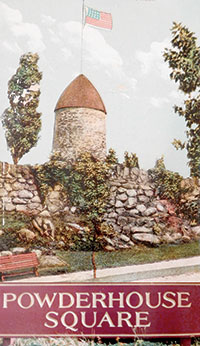
- On September 1, 1774, after disembarking from the Mystic River, 260 British troops marched over Winter Hill and on to attack the Powder House. This secret raid proved to be the dress rehearsal for the assault eight months later on Concord.
§
-
- On the eve of April 19, 1775, Paul Revere galloped over Winter Hill’s 135-foot peak on his midnight ride toward Lexington.
§
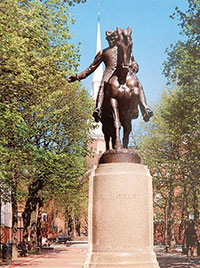
- On the eve of April 19, 1775, Paul Revere galloped over Winter Hill’s 135-foot peak on his midnight ride toward Lexington.
§
-
- Two months later on June 17, 1775, a field hospital for the Battle of Bunker Hill’s wounded was formed at the summit of Winter Hill. It was organized by Revolutionary War heroine Ann Adams Tufts on her family’s farm. She nursed both American soldiers and British prisoners while the site was fortified for most of the war. Today, Anne’s house at 438 Broadway is one of the city’s oldest and was built from the timber of Winter Hill’s Fort.
§
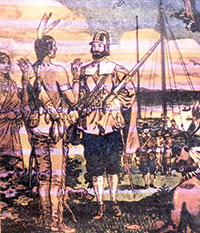
- Two months later on June 17, 1775, a field hospital for the Battle of Bunker Hill’s wounded was formed at the summit of Winter Hill. It was organized by Revolutionary War heroine Ann Adams Tufts on her family’s farm. She nursed both American soldiers and British prisoners while the site was fortified for most of the war. Today, Anne’s house at 438 Broadway is one of the city’s oldest and was built from the timber of Winter Hill’s Fort.
§
-
- After the 1777 American victory at Saratoga, New York, 2000 Hessians or German prisoners were brought to the Winter Hill encampment. During their stay, they brought with them the practice of Christmas trees and the game of Keg Legging, now known as bowling.
§
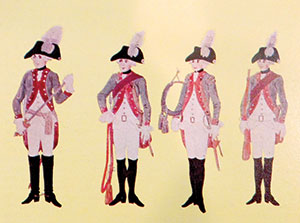
- After the 1777 American victory at Saratoga, New York, 2000 Hessians or German prisoners were brought to the Winter Hill encampment. During their stay, they brought with them the practice of Christmas trees and the game of Keg Legging, now known as bowling.
§
- American martyr, Captain Nathan Hale, spent the last year of his life Ranger training on Winter Hill. After volunteering to be one of General Washington’s spies, he was captured by the British and executed. The famous patriot’s last words were, “I only regret that I have but one life to lose for my country.
§
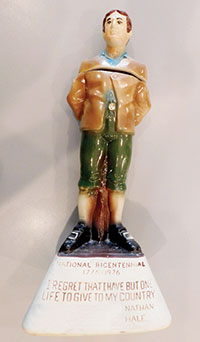
§
The residents of Winter Hill witnessed or were part of the British chase of Paul Revere, the Battle of Lexington that ended in Somerville, the Siege of Boston, an American training camp, and a Hessian prisoner of war camp. For over half of the eight-year Revolutionary War, Winter Hill residents suffered greatly. For the rest of the revolution, they were not called upon, but they served anyway.
§
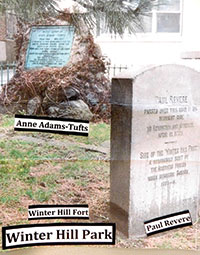
§
Today, Winter Hill Park is a federal park and the smallest in the nation. It honors the sacrifices of those heroes.















Reader Comments